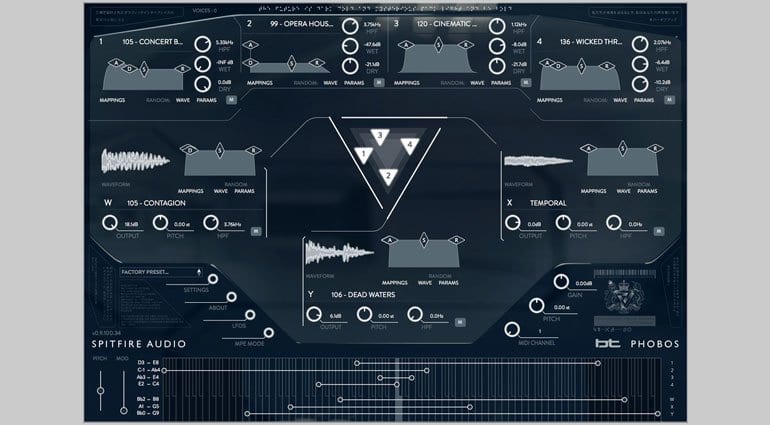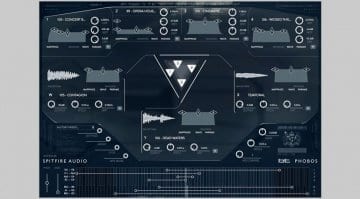BT Phobos: Polyconvolution Synthesizer with Spitfire Audio
Spitfire Audio have introduced a new virtual instrument in collaboration with producer BT. It’s called BT Phobos and is a new concept called a Polyconvolution Synthesizer. I’m pretty sure this is the “eDNA Phobos” product behind the weird reveal event they did at NAMM in 2016, and then told no one anything about. It’s well over a year later, so maybe it wasn’t as ready as they thought it was.
BT Phobos
Perhaps the fact that this is Spitfire Audio’s first virtual instrument not built in Native Instrument’s Kontakt is the reason for the delay. Maybe it became too complex and had to break free of the Kontakt engine. Who knows, and it probably doesn’t matter. Let’s see what it’s all about.
Like all Spitfire products, BT Phobos is huge, epic and cinematic. So what is it that makes this different from the crowd of similarly enormous sound engines? Well, it’s all about “unlocking the liquid, morphing and transforming capabilities of convolution.” That sounds exciting! BT has poured in around 20GB of his own sound library which then uses the convolution sound engine to sculpt, filter and rhythmically cut and pulse impulse responses.
As the name suggests, it’s all polyphonic and Spitfire say it’s capable of amazing feats of tonal and melodic texturing. There’s a lot of mutation, evolving, morphing and warping on offer to introduce variation into sequences.
It’s really hard to describe in any sensible way, but I am enjoying the evocative marketing descriptions. Like this one:
Combining something rhythmic with something tonal (as an impulse response) yielded some of the most modern, liquid and percolating ambiences and textures BT had ever heard. These are the kinds of sounds he has been searching for whilst scoring; those elusive sounds where the director asks for “movement and a feeling of drive, yet subtly”. That’s not to say that Phobos only excels at subtlety – it can sound massive, driving and aggressive, like an army of monsters in its scope and power.
Crowded House
The sample based cinematic sound engine market seems so crowded that it’s difficult for a product to emerge from the convoluted fog of sonic textures. Spitfire Audio are responsible for a large chunk of that crowd. I find it interesting that they’ve spent so long on developing or maybe even perfecting this one. Maybe there’s a depth and a personality to BT Phobos that the rather generic promotional video can’t capture. I’m looking forward to seeing some more in-depth demonstrations, and I’ll certainly like the opportunity to tinker with it. In fact, check out the walkthrough video at the bottom for bit more of an eye-opener.
I confess I’m not fully grasping the convolution side of it all. It says that you can use 2401 sounds, provided by BT, as a source or as an impulse response. The idea being that you can make an impulse – a model of something – tonal and use it as the basis of sound generation. Well, let’s go with that.
BT Phobos will be available on the 20th April, for VST, AU and AAX for the discounted price of £209. More information available on the Spitfire Audio website.
You are currently viewing a placeholder content from YouTube. To access the actual content, click the button below. Please note that doing so will share data with third-party providers.
You are currently viewing a placeholder content from YouTube. To access the actual content, click the button below. Please note that doing so will share data with third-party providers.








